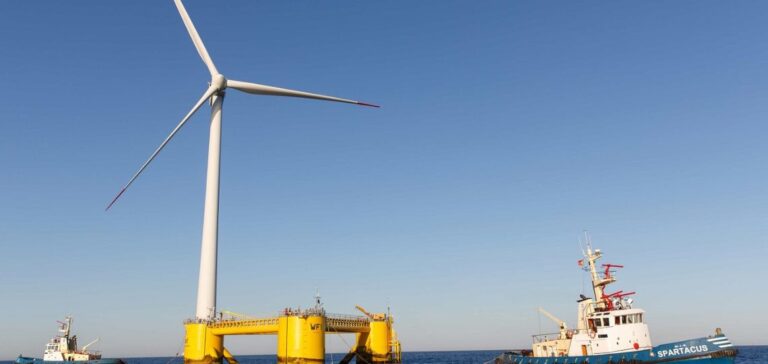BlueFloat Energy, a major player in the field of renewable energies, announces a strategic breakthrough in the floating wind energy sector in Taiwan with its “Winds of September Phase 1” project.
This pilot project, located 23 kilometers off the coast of Hsinchu, involves the installation of 12 floating platforms with a total capacity of 180 MW.
The initiative marks a key step in Taiwan’s energy transition, which aims to diversify its energy sources while reducing its dependence on fossil fuels.
The project is based on rigorous studies carried out since 2021, including a floating Lidar deployment campaign in March 2023, as well as environmental and geophysical assessments.
These analyses will help optimize site selection and ensure efficient energy production while minimizing the impact on the marine ecosystem.
Partnership with MIRDC to structure the supply chain
As part of this project, BlueFloat Energy is working closely with the Metal Industries Research & Development Centre (MIRDC).
The aim of this collaboration is to assess the ability of local suppliers to meet the technical requirements of floating wind farm projects.
MIRDC, with its experience in the construction of fixed-foundation offshore wind farms, plays a crucial role in helping Taiwanese companies meet international standards.
The supplier evaluation focuses on mooring and anchoring systems, essential for the stability of floating platforms.
Fifteen potential suppliers have been identified, and site visits are underway to validate their technical capabilities.
This partnership is part of a wider strategy to prepare Taiwan for large-scale adoption of floating wind power, a sector in which the country could position itself as a regional leader.
Prospects for floating wind power and decarbonization in Taiwan
The “Winds of September Phase 1” project is just the beginning of a series of initiatives designed to strengthen Taiwan’s energy infrastructure. By anticipating marine engineering, port operations and supply chain needs, BlueFloat Energy and MIRDC are laying the foundations for the future development of floating wind power.
This still emerging technology offers considerable prospects for decarbonizing the Taiwanese economy and reducing its dependence on fossil fuels.
The success of this transition also depends on the establishment of a solid regulatory framework, which will support local businesses while attracting international investment.
The implementation of favorable policies could accelerate the development of floating wind power, while guaranteeing competitively priced energy for local industries.
By moving in this direction, Taiwan could not only achieve its energy goals, but also stimulate economic growth and create new jobs in promising sectors.






















